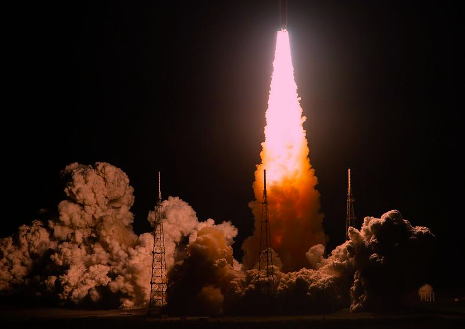

On November 16, at 1:47 a.m, the Artemis 1 launched from NASA’s Kennedy Space Center in Wilson, Florida. This marks the beginning of an attempt to reestablish manned flight to space, a moon base, and eventually landing on Mars.
The Artemis 1’s is the first step in a return to human exploration of the cosmos by Nasa. It’s mission is to safely deliver an unmanned crew module through entry, descent, splash down and recovery before risking the lives of any astronauts through the process, according to the NASA official website.
If the module returns, Nasa will proceed with manned missions with Artemis 2 and Artemis 3, hoping for lunar orbit and lunar landings respectively.
Executive of South Texas Astronomical Society Victor De Lo Santos had this to say when asked about the importance of the mission.
“The Apollo generation was the one that saw the first man on the moon,” said De Los Santos. “Now we’re entering the era of Artemis …the whole point of the Artemis mission is to establish a permanent base on the moon and use all the knowledge and tools that we get there and take that to Mars. With this launch we are literally witnessing the very first steps of that program.”
Associate professor in physics and astronomy at UTRGV Nicolas Pereyra, when asked about how the Artemis Program has affected his students said, “I think it’s definitely creating a buzz. These are missions that should happened. They should have continued as opposed to stop with the Apollo program, so it’s definitely a good we’re getting back on track.”
Assistant professor in physics and astronomy Juan Madrid did caution jubilation over the event while praising the achievement, citing that while it is impressive, sending a satellite to the moon is very different from sending a person there.
“There is a huge difference between sending spacecraft to fly around the moon and come back. But there is a big difference between that and sending a human to the moon,” said Madrid.
The next module is set to return in 25 days. To learn more about the Artemis project, visit NASA’s official website.



